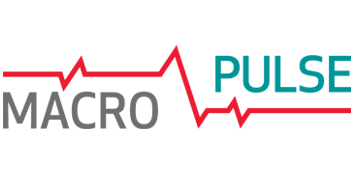
Business sentiment indicator for Polish manufacturing (PMI) dropped to 53.4 pts in October vs. 53.7 pts in September, running slightly below our forecast (53.5 pts) and the market consensus (54.0 pts).
Especially noteworthy in the structure of the October PMIs is a sharp increase in total orders in Polish manufacturing. The new orders sub-index has not changed compared to September (31-month high). Like in September, total orders were growing faster from export orders, which signals continuing fast increase in domestic demand. In our view, the stronger domestic demand for manufactured goods is related to the positive impact of rebound in construction (resulting from acceleration in public investments implemented with the use of EU funds and increase in housing investments) on the manufacturing branches supplying goods used as an input for the assembly-construction production (see MACROpulse of 18/10/2017). This view is supported by data on the structure of the assembly-construction production. They indicate that most segments (i.a. residential and non-residential buildings, railway, roads, media) recorded an annual increase in production in Q3.
New export orders growth has slightly slowed down in October despite good sentiment in manufacturing in Germany and in the Eurozone (see MACROmap of 30/10/2017). Slower inflow of new export orders has contributed to a slight slowdown of production growth (the output sub-index has decreased from 54.1 pts down to 53.4 pts).
According to GUS business survey, the percentage of companies reporting difficulties in finding skilled labour increased again in Q4 and was the highest in the survey history. The results of the October PMI are in line with GUS assessments. Although the employment sub-index rose from 50.0 pts up to 51.8 pts (the fastest increase in employment since May 2017), the surveyed companies have nevertheless signaled an increase in production backlogs for a third month in a row.
Third consecutive decrease in the sub-index for inventories of finished goods was recorded in October. It reached the lowest level since June 2013. This shows that the continuing fast increase in demand in manufacturing, given no possibilities of a fast employment growth, forces enterprises to carry out some orders through direct sale of their stocks. Although in the coming months some companies will decide to increase capacity and make investments enabling them to change production techniques for less labour consuming ones, the possibilities of substituting labour by capital are limited and production effects of these investments will appear with some delay. Consequently, a drop in the contribution of inventories to GDP growth can be expected in Q4. This is in line with our scenario of a moderate slowdown in GDP growth to 4.2% YoY in Q4 vs. 4.5% in Q3.
Today's data are neutral for PLN and yields on Polish bonds.

